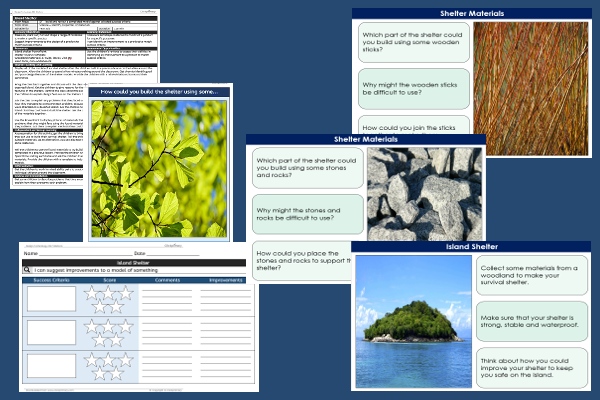Lesson Six – Island Shelter

This design technology teaching pack for Key Stage Two gets the children to complete the building of a survival shelter for an island location and evaluate and review the completed models against the selected success criteria.
The class can suggest improvements and developments to the completed shelter models that have been built using different materials collected from a woodland area.
Download this teaching pack including a lesson plan, classroom activities and an interactive presentation to complete the building of a survival shelter for an island location and evaluate and review the completed models against the selected success criteria
Activities in this teaching pack include display posters to identify and explain how to use a range of different materials and shapes to build a survival shelter and a template to review a model of a survival shelter against specific success criteria.
The interactive presentation can be used to explore how to complete the building of a survival shelter and review completed models against selected success criteria.
This lesson is part of a design technology scheme of work to get the children to select and combine a range of different materials and building techniques to construct a model of a survival shelter suitable for an island location. There are teaching activities for shared learning, differentiated worksheets to support independent learning and interactive presentations to introduce concepts and key skills.
-

Determinant Lists
Explain and model how to make lists of objects used and found in different locations to match the correct determinants of a and an
-

English SPAG Assessment
Assess abilities in composing sentences for fiction and non-fiction using the correct spellings, punctuation marks and grammar vocabulary phrases
-

Maths Arithmetic Assessment
Assess abilities in solving arithmetic number problems for addition, subtraction, multiplication and division when working with informal and formal written calculations
-

Environment
Identify and describe some of the special landscapes and locations that can be found in the world and reflect on how they can be protected and preserved for the future
